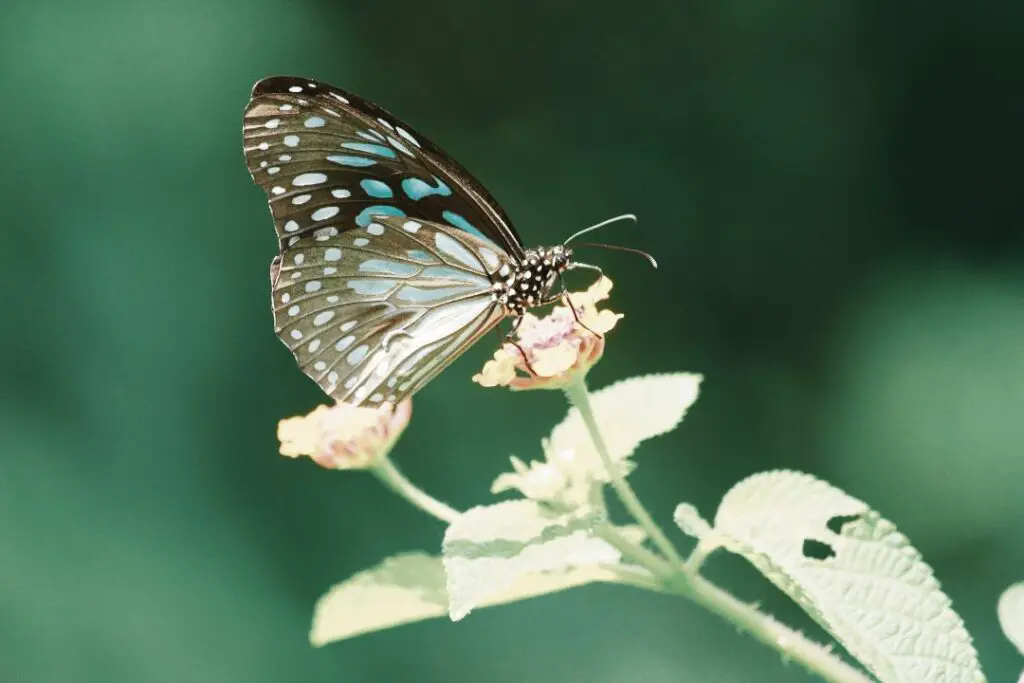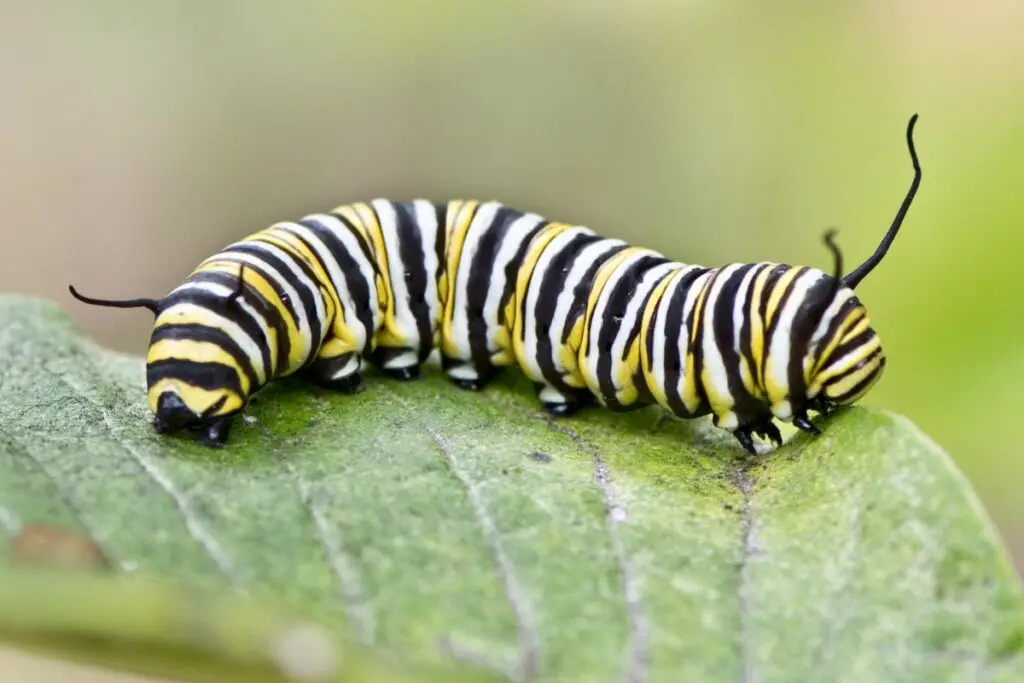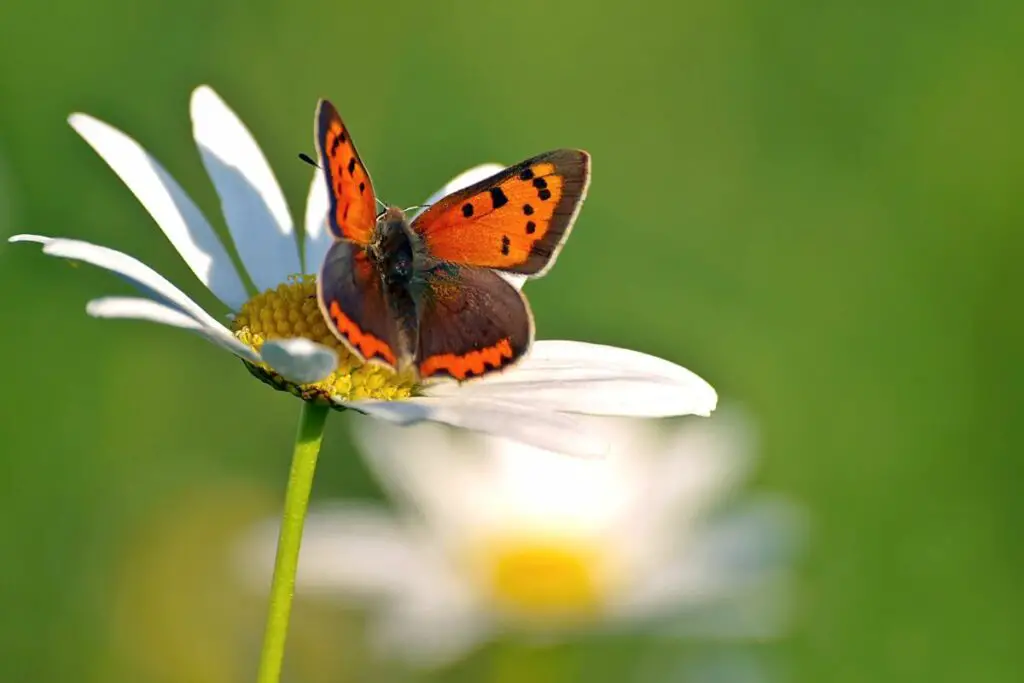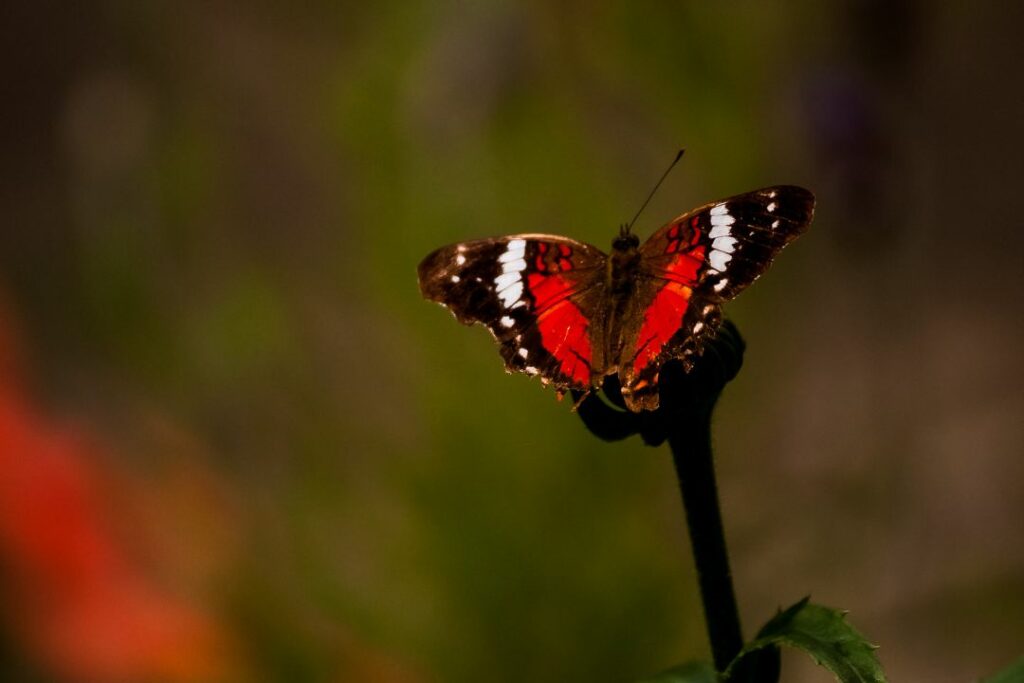As far as we understand, butterflies do not feel pain, at least not like we do. Their straightforward nervous system allows them to function, but this doesn’t extend to ‘feeling’ as we know it.
But to truly uncover if butterflies can feel pain, we need to dive into a question that’s not just about butterflies but about ethics, science, and the mysteries of life itself.
So grab a cup of tea, settle in, and let’s unravel this intriguing question together.
The Anatomy of a Butterfly
Before we can dive into this topic, we need to understand more about how bees sense the world.
The nervous system
Ever looked at a butterfly fluttering around and thought, “What’s going on in that tiny head?” You’re not alone. Whether butterflies have a nervous system similar to ours is fascinating. Spoiler alert: they have a nervous system, but it’s like comparing a flip phone to a smartphone.
Butterflies have a much simpler nervous system designed to handle essential functions like flying, eating, and reproducing.
Humans, on the other hand, have billions of neurons and complex brain structures. Butterflies have a more rudimentary setup. Their nervous system is primarily geared towards survival instead of experiencing the world like ours.
Sensory organs
So, if they’re flying around, dodging predators, and finding food, they’ve got to feel something, right? Well, not so fast. Butterflies have specialized sensory organs, like antennae and compound eyes, that help them navigate the world.
These organs can detect changes in the environment, like the scent of a flower or the presence of a predator. But that doesn’t necessarily mean they feel pain.
Think of it like a car’s GPS system. It can detect where to go but doesn’t “feel” the journey. Butterflies are incredibly efficient at what they do, but their sensory organs are more about function and less about feeling.
Real-Life Example
The Monarch butterfly is famous for its incredible migration journey. Researchers have found that Monarchs use their antennae to sense the Earth’s magnetic field, helping them navigate thousands of miles.
It’s a remarkable feat of nature, but it’s unlikely that the butterfly is experiencing this journey in a way that involves pain or emotional processing.
So, the next time you see a butterfly and wonder what it’s feeling, remember: it’s a marvel of biological engineering, but it’s probably not pondering the complexities of life.
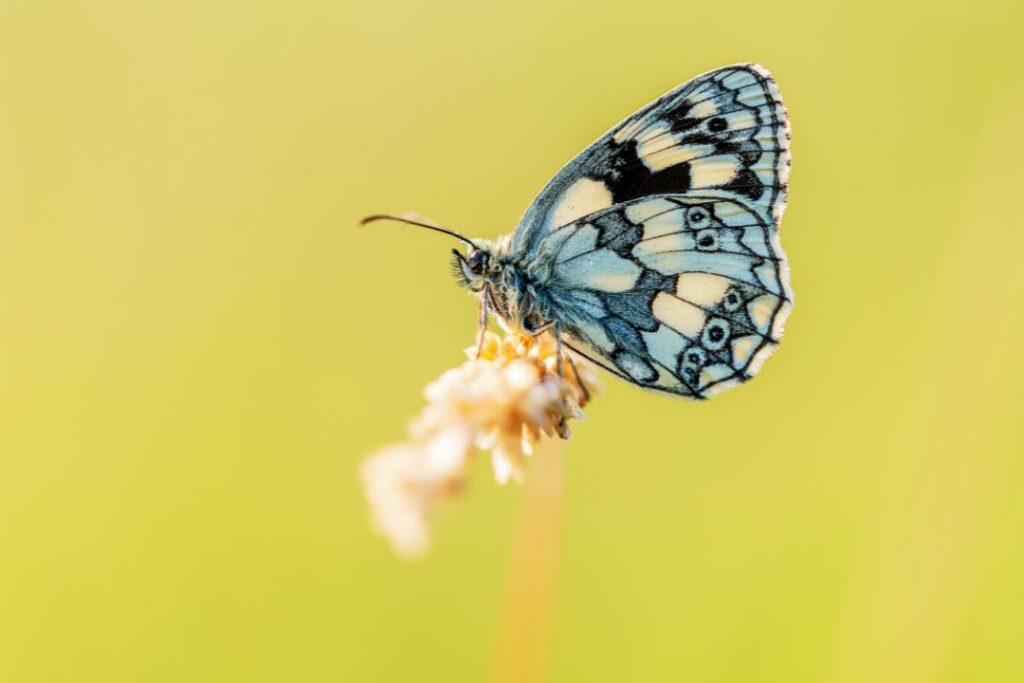
What Science Says About Butterfly Pain
When you first dive into insect neurobiology, most studies are about bees or ants, leaving butterflies fluttering in the wind. Why? Well, bees and ants are social insects with complex behaviours, making them more intriguing to scientists.
A white paper by Eisemann et al. discusses whether insects generally feel pain. The paper suggests insects do not experience pain like mammals, primarily because their nervous systems are far less complex.
The debate among scientists
Ah, the age-old debate: do insects feel a form of pain, or are they just tiny biological robots following their programming?
Scientists are divided into two camps on this. One group argues that the rudimentary nervous system of insects doesn’t allow for the experience of pain.
The other suggests we can’t be entirely sure; pain is a subjective experience, and no one can assume to know what another living thing feels.
Current consensus
So, where does that leave us? In a realm of uncertainty, to be honest. The jury’s still out on whether butterflies or any insects, feel pain.
We know that their nervous systems are far less complex than ours, making it unlikely that they experience pain how we understand it.
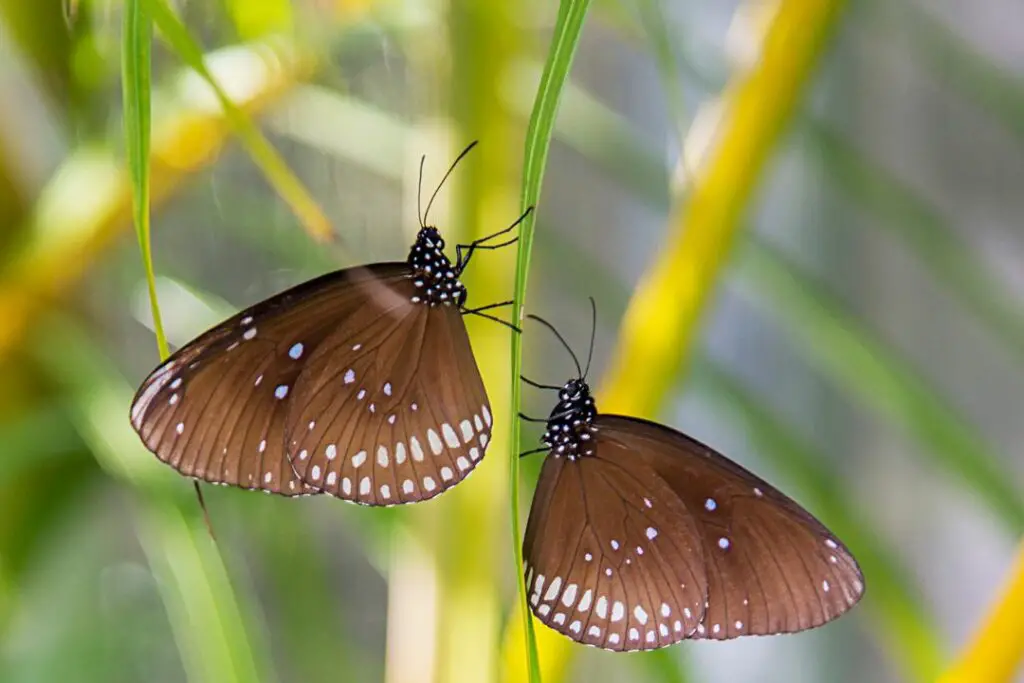
Ethical Implications
So, you’ve read the science, and now you’re scratching your head. If butterflies—or any insects—might feel some form of pain, are we all villains in a tiny tragedy?
Insect welfare
The ethical implications are as complex as a spider’s web. On one hand, if insects don’t feel pain, our moral obligations might seem less stringent. But what if they do? That’s where the ethical waters get murky.
The dilemma here is about responsibility. If there’s even a sliver of a chance that insects like butterflies experience discomfort, then our ethical playbook needs a rewrite.
Maybe those butterfly exhibits, where you can walk among free-flying butterflies, need to be reevaluated. It’s not just about looking; it’s about interacting responsibly.
Human interaction
Let’s get real. Most of us have swatted a fly or captured a bug to get a closer look. But if we’re now questioning the very foundation of insect sentience, it’s time to rethink those actions.
Swatting a mosquito is often justified by self-defence (hello, itchy bites!), but what about trapping a butterfly in a jar? Is that innocent childhood curiosity, or is it an ethical misstep that could cause stress that we don’t even truly understand?
Should we rethink?
The short answer is yes. As we learn more about the complexities of insect life, it’s crucial to adapt our behaviours. It’s not just about being kind; it’s about being informed and making ethical choices that align with our growing understanding of the natural world.
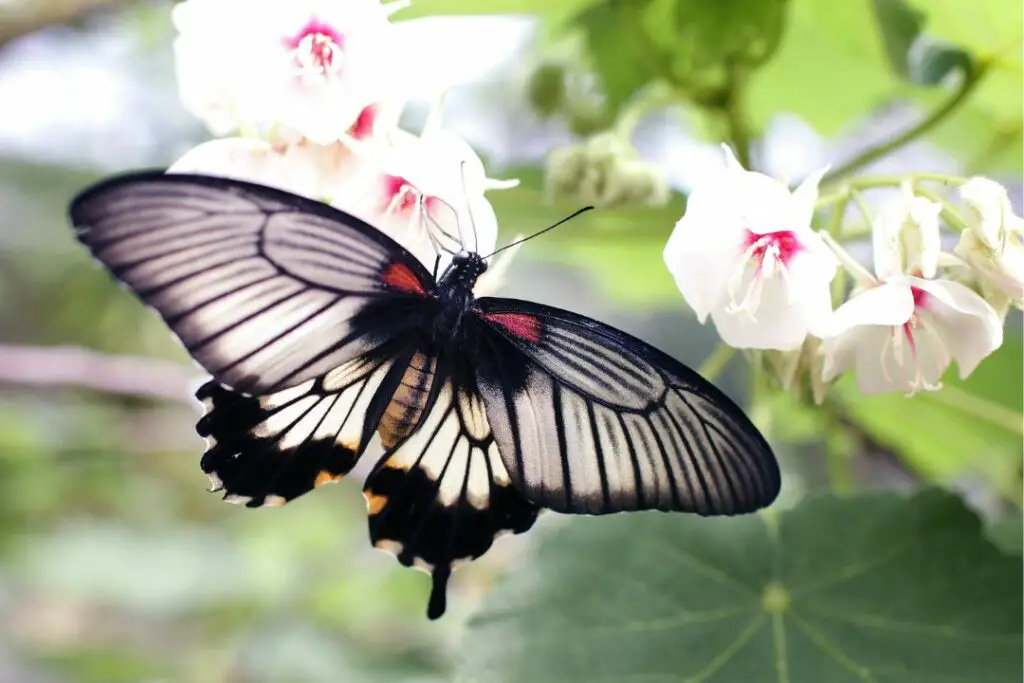
In Conclusion
So, here we are at the end of this fluttery journey, and you’re probably wondering, “What’s the big reveal?” Drumroll, please 🥁…
Most likely, butterflies don’t feel pain as we know it. But the absence of pain doesn’t give us a free pass to act carelessly.
If you’ve enjoyed this read, check out our other fascinating articles below, packed with amazing insights into the world of butterflies and pollinators in your garden.

